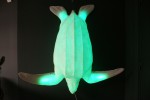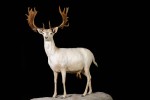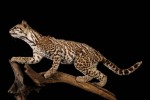Common eland / Southern eland / Eland antelope – Taurotragus oryx
Females are smaller than males and weigh less heavy. Their coats are also different, that of the female is rather beige while the male is gray; female and male, however, have stripes on the flanks. Their horns allow them to protect themselves against predators, they are a formidable weapon against lions or cheetahs.
The Eland feeds mainly on leaves, branches, fruits, it is herbivorous and do not hunt, merely that can give it the nature, like water for example, although it may remain for long periods without absolute necessity to drink.
The Eland is accustomed to arid environments in which their metabolism allows it to survive, it needs large spaces, it can not live in rainforests. Geographically, it is predominantly the south of Africa, where it lives in herd. The herds are targeted by predators such as lions and hyenas; a herd reached about 20 to 70 impulses led by a dominant male that alerts the danger when it occurs.
The female gives birth to a baby after 280 days of gestation, a little more than a human being, it only happens once a year. The young and mother are protected by adult male against predators.
The Eland is far from extinct, the earth’s population is approximately 136.000, it is not a protected species and it is not campaigning for its cause. In contrast, the hunt for its hide, its flesh, its horns.
Sometimes, it is domesticated in South Africa and may represent a symbol of success.





